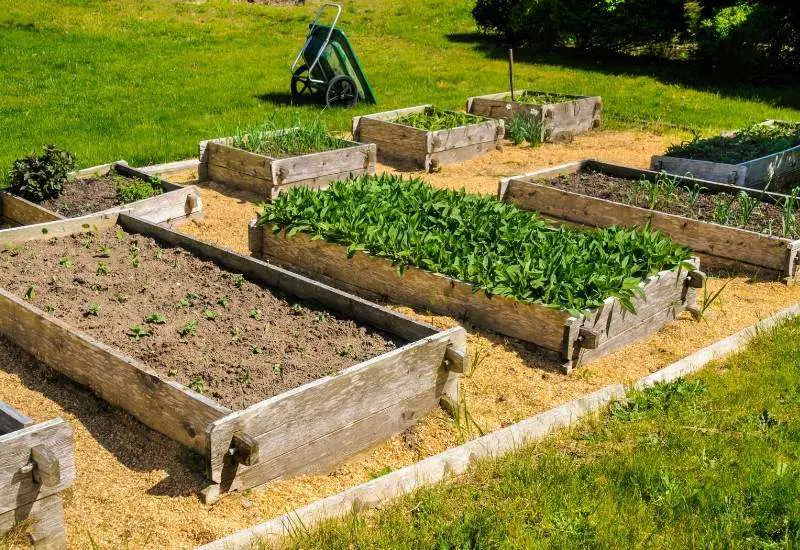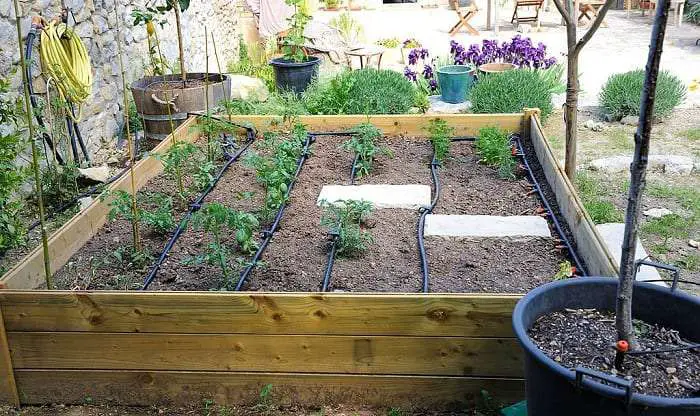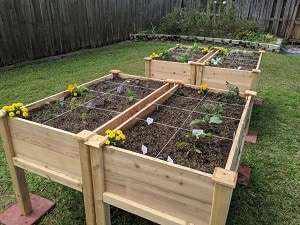In this article, we will be discussing the pros and cons of using plastic at the bottom of raised beds. Whether you are an avid gardener or interested in off-grid living, this topic is important to consider. We will explore the potential benefits and drawbacks of using plastic in your raised beds and help you make an informed decision. Stay tuned to learn more about this aspect of gardening and how it might impact your gardening experience.
The Pros and Cons of Using Plastic at the Bottom of Raised Beds
Raised beds have become increasingly popular among gardeners and homeowners alike. They offer numerous benefits such as improved drainage, better soil quality, and easier maintenance. When it comes to the bottom of raised beds, one question that often arises is whether to use plastic or not. In this article, we will explore the pros and cons of using plastic at the bottom of raised beds, as well as alternative options and their effects on soil and plant health. We will also discuss the environmental impact and provide expert opinions and case studies to help you make an informed decision.
Pros of Using Plastic at the Bottom of Raised Beds
1. Water Retention
Using plastic at the bottom of raised beds can help retain moisture in the soil. Plastic acts as a barrier, preventing water from seeping out of the bed and ensuring that the plants receive a consistent water supply. This can be particularly beneficial in dry climates or during periods of drought, as it reduces the need for frequent watering.
2. Weed Control
Another advantage of using plastic at the bottom of raised beds is that it helps in weed control. Plastic acts as a physical barrier, preventing weeds from growing through the bottom of the bed. This can save gardeners time and effort in manual weeding or the use of herbicides.
3. Pest Prevention
Plastic at the bottom of raised beds can also act as a deterrent to pests. Insects and other garden pests are less likely to burrow through the plastic into the raised bed, reducing the risk of damage to your plants. This can be particularly beneficial if you have a pest problem in your garden or if you are growing delicate or susceptible plants.
Cons of Using Plastic at the Bottom of Raised Beds
1. Limited Drainage
One of the main drawbacks of using plastic at the bottom of raised beds is that it can impede drainage. Plastic acts as a barrier, preventing excess water from draining out of the bed. This can lead to waterlogged soil, which can be detrimental to the health of your plants, as it can suffocate the roots and cause root rot. It is essential to ensure that there are proper drainage holes or channels in the raised bed to allow excess water to escape.
2. Soil Health Compromised
Using plastic at the bottom of raised beds can also compromise soil health. Plastic prevents proper aeration and the natural exchange of gases between the soil and the atmosphere. This can lead to decreased microbial activity, which is essential for breaking down organic matter and releasing nutrients into the soil. Over time, this can result in poor soil fertility and reduced plant growth.
3. Restricted Root Growth
Plastic can restrict root growth in plants. Roots naturally seek out moisture and nutrients, and in a raised bed, they would ideally grow down into the ground below. However, with the presence of a plastic barrier at the bottom of the bed, roots may become trapped or restricted, leading to stunted growth and overall weaker and less healthy plants.
Factors to Consider
Before deciding whether to use plastic at the bottom of your raised beds, it is essential to consider certain factors:
1. Climate
The climate in which you live plays a crucial role in determining whether plastic at the bottom of raised beds is suitable. In arid or dry regions, the water retention properties of plastic can be advantageous. However, in areas with high rainfall or excessive moisture, the limited drainage may be problematic and can cause waterlogging.
2. Watering System
The type of watering system you use can also impact the effectiveness of using plastic at the bottom of raised beds. Drip irrigation or a well-designed watering system that delivers water directly to the plants’ roots can help mitigate the issue of limited drainage. However, if you rely on traditional watering methods such as overhead sprinklers, the excess water may have difficulty draining, leading to issues with soil moisture levels.
3. Bed Size
The size of your raised beds is also a factor to consider. Larger beds may have more challenges with drainage and soil health if plastic is used at the bottom. Smaller beds may fare better, as water retention and root restriction may not be as pronounced. Additionally, the size of the plants or crops you are growing can also impact their susceptibility to the drawbacks of using plastic.
Alternatives to Plastic at the Bottom of Raised Beds
If you decide that using plastic at the bottom of your raised beds is not the best option for you, there are several alternatives to consider:
1. Landscape Fabric
Landscape fabric, also known as weed barrier cloth, is a permeable material that allows water and air to pass through while suppressing weed growth. It can be an excellent alternative to plastic as it still provides some weed control benefits while allowing better drainage and aeration.
2. Cardboard
Cardboard is a readily available and biodegradable material that can serve as a bottom layer in raised beds. It acts as a weed suppressant, decomposes over time, and adds organic matter to the soil. However, it does not provide the same moisture retention properties as plastic.
3. Gravel
Gravel can be used as a drainage layer at the bottom of raised beds to improve overall drainage. It allows excess water to flow through, preventing waterlogging and promoting better root health. However, it is important to choose a gravel size that does not compact too tightly and restrict root growth.

Effects on Soil and Plant Health
The decision to use or not to use plastic at the bottom of raised beds can have significant effects on soil and plant health:
1. Soil Aeration
Proper soil aeration is crucial for healthy plant growth. The use of plastic at the bottom of raised beds restricts air movement and can lead to soil compaction. This can inhibit root development and decrease the availability of oxygen to the roots, resulting in decreased plant health and growth.
2. Nutrient Availability
The presence of plastic can also affect nutrient availability in the soil. As the plastic prevents organic matter decomposition and microbial activity, essential nutrients may not be released into the soil for plant uptake. This can result in nutrient deficiencies and negatively impact plant growth and productivity.
3. Disease Risk
The use of plastic at the bottom of raised beds can increase the risk of certain diseases. Moisture trapped in the bed can create a favorable environment for fungal and bacterial pathogens. Additionally, lack of proper soil aeration and nutrient availability can weaken plants, making them more susceptible to diseases.
Environmental Impact
Using plastic at the bottom of raised beds also raises concerns about its environmental impact:
1. Plastic Pollution
Plastic is a non-biodegradable material that takes hundreds of years to break down. When it is used at the bottom of raised beds, it can end up in landfills or be disposed of improperly, contributing to plastic pollution. This has far-reaching negative consequences for the environment, wildlife, and human health.
2. Sustainability
In today’s environmentally conscious world, the use of plastic is often discouraged due to its negative impact on the environment. By choosing alternative materials or methods that are more sustainable, such as organic mulch or natural weed control options, you can reduce your ecological footprint and contribute to a healthier planet.

Opinions from Experts
To further explore the topic, here are some expert opinions:
1. Expert Opinion 1
According to horticulture expert Dr. Amanda Green, “While plastic can offer benefits such as weed control and water retention, its drawbacks should not be overlooked. It is crucial to weigh the long-term consequences on soil health, drainage, and root growth before deciding whether or not to use plastic at the bottom of raised beds.”
2. Expert Opinion 2
Landscape architect and sustainability advocate, Jane Adams, suggests, “Consider using alternative materials such as landscape fabric or gravel to strike a balance between weed control and proper drainage. These options provide better long-term soil health and reduce the environmental impact of using non-biodegradable plastics.”
3. Expert Opinion 3
Permaculture designer and educator, Mark Johnson, advises, “In permaculture principles, we aim to work with nature rather than against it. Plastic at the bottom of raised beds goes against the natural processes of soil ecology. It is better to focus on improving soil structure and fertility through organic practices and mindful watering.”
Case Studies
To provide practical insights, let’s examine two case studies:
1. Case Study 1: Plastic vs. Non-Plastic Raised Beds
A study conducted by the University of Agriculture found that raised beds without a plastic barrier at the bottom had better overall plant growth and yield compared to those with plastic. The non-plastic beds exhibited better drainage, root development, and soil health, resulting in healthier plants and increased productivity.
2. Case Study 2: Plastic’s Impact on Plant Growth
A group of researchers from a horticultural institute examined the effect of plastic at the bottom of raised beds on various plant species. They found that while plastic improved water retention, it negatively impacted root growth and overall plant health. Plants exhibited weaker root systems and smaller above-ground growth compared to those in non-plastic beds.
Best Practices for Using Plastic at the Bottom of Raised Beds
If you decide to use plastic at the bottom of your raised beds, here are some best practices to consider:
1. Proper Installation
Ensure that the plastic is installed correctly, with no gaps or tears that could allow weeds or pests to enter the raised bed. Use a durable and thick plastic material to minimize the risk of damage.
2. Maintenance Tips
Regularly inspect the plastic for any signs of wear or damage and promptly repair or replace it as necessary. Keep the area around the raised bed clear of debris to prevent potential damage to the plastic.
3. Regular Inspections
Monitor the moisture levels in the raised bed and adjust watering accordingly. Use a moisture meter or perform a finger test to check the soil’s moisture content. Avoid overwatering, as this can lead to drainage issues and waterlogged soil.
Conclusion
The decision to use plastic at the bottom of raised beds is a personal one that depends on various factors, including climate, watering system, and bed size. While plastic offers benefits such as weed control and water retention, it also presents drawbacks such as limited drainage and compromised soil health. Considering alternative options, such as landscape fabric, cardboard, or gravel, can provide a more sustainable and environmentally friendly approach. Ultimately, it is important to prioritize soil and plant health, as well as the long-term impact on the environment when making your decision.
Remember to weigh the pros and cons, seek expert opinions, and consider case studies to ensure that your choice aligns with your gardening goals and values. By making an informed decision, you can create thriving and sustainable raised beds that benefit both your plants and the environment.




